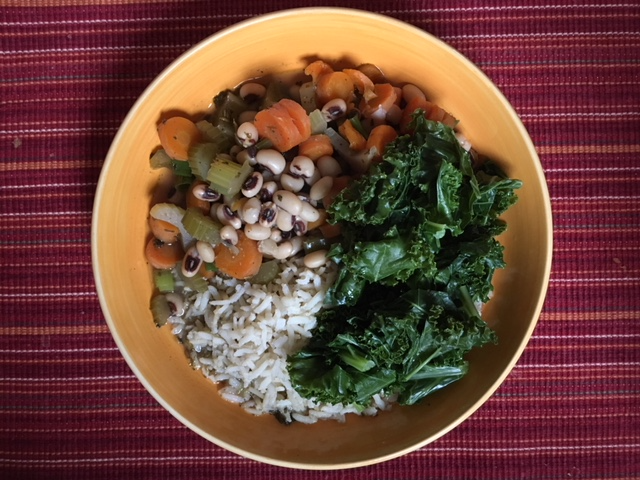Ayurvedic Meal Planning
May 30, 2019 | Written by Leticia Padmasri
Simple yet Delicious!
There are many benefits of making our own meals. We know all the ingredients involved in the process. We know the energy put into the process. We can make it balancing for our constitution and beloved ones. We can create a peaceful environment for eating. We save money, and the list goes on.
But within our fast-paced lives, we may end up just eating something processed or eating out. Ayurveda works by looking at the things we have control over. One very important aspect of this way of living, is that Ayurveda asks us to take responsibility for our choices, including our dietary choices. Through this, there is empowerment and we realize we can make a difference in the quality of our life, and how we feel based on our choices.
When you cook for yourself, you are exercising self-responsibility, and making the right choices for your health, both body and mind. Here are four tips to make cooking your own meals both manageable and fun!
Plan your meals in advance. I personally plan my meals at the beginning of each week, in order to save time and reduce stress. But you can even plan it the night before, in which case you would set out the grains and legumes on the counter each night and soak the ones that require it. This helps you get on track when you start cooking the next day.
Have a scheduled shopping time. It is beneficial to have a stock of staple items in your pantry, and to shop regularly. Grocery day in our household is Saturday early morning, which works for our schedules. If you can go daily, then that’s great! For many of us though, we might find the time to go once or twice a week. Plan around your “grocery day”, so that you always have the ingredients that you need.
Have your largest meal midday. This is ideal. A lot of our health issues today come from having large meals at other times of day, or multiple times a day. Here is how you could make a habit out of this ayurvedic guideline. Depending on your schedule, you may be able to prepare the meal in advance and then eat it at midday. I find that there are days when I have to make lunch right after I have breakfast or even before. I prepare the grains, the legumes, and the vegetables that take longer to cook. Then I leave the greens washed and chopped, and cook them once I arrive home. Also, if you don’t have time to prepare another meal in the early evening, you might have some leftovers that you could use from lunch. In fact, that’s what I do most days. I make a little more for the midday meal and use that for the evening meal and add to it as necessary. What changes from lunch to dinner is the veggies and greens. I usually take what is left from our lunch, combine it together and make a soup out of it. It’s ideal to prepare the meal and then eat it, but if you know this is not possible for you and the alternative is that you might eat out or eat something that’s processed, then this is a good choice. Cook enough food for both lunch and dinner and then supplement dinner as necessary with a different side dish. If you eat your cooked food within 12 hours from when it is ready, you are still getting most of the prana from it.
Keep it simple. Eating simply is very important. It seems that food has become trendy, and people are more focused on using ingredients to make food look and taste exotic. Our digestive tract actually isn’t that fond of exotic ingredients. It really likes simple foods, and especially not too much variety at once, such as having five vegetables for one meal. For simple and delicious recipe suggestions, I recommend one of my teachers’ books: Simple Ayurvedic Recipes by Myra Lewin.

